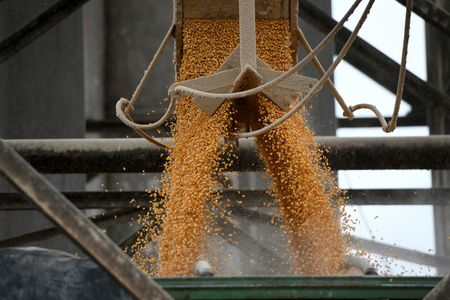By Karl Plume
CHICAGO (Reuters) – U.S. corn export dominance is fading in an increasingly competitive global marketplace as Brazil, aided by a new supply agreement with China, is set to out-ship the U.S. for just the second time ever this season.
Meanwhile, Mexico, America’s other top market, is preparing to limit imports of genetically modified corn that comprises more than 90% of every U.S. harvest.
The eroding export market share spells trouble for the $90 billion U.S. corn industry as domestic demand for feeding livestock and producing ethanol has also cooled. Plantings of America’s most widely grown crop are likely to decline and farm incomes could suffer in the years ahead as a result, analysts said.
“When we look at U.S. corn demand long term, we wonder where new demand is coming from,” said Stephen Nicholson, global grains and oilseeds sector strategist with Rabobank, an agricultural lender.
“Brazil is likely taking a bigger share of the global market, ethanol has likely peaked and animal protein is likely not going to grow fast enough,” he said.
Illinois farmer Richard Guebert is concerned. “We need a good export market for our corn. The seed technology in Brazil is getting better and better each and every year. They’re not going away,” he said.
Shrinking corn exports echo challenges faced by U.S. soybeans a decade ago as Brazil ramped up production to feed soaring Chinese demand, eventually capturing the top supplier crown in 2013. The country now typically dominates the global soy export market for eight months of the year or more, undercutting U.S. exports. Brazil is also the world’s top poultry, coffee and sugar exporter.
Brazilian corn exports are expected to flood the global marketplace beginning in July and into the U.S. autumn harvest. The country harvests two corn crops from its tropical soils each year, unlike the U.S.
Despite the limited demand, U.S. farmers expanded corn seeding this year to the largest in a decade, encouraged by lower seed and fertilizer costs and good planting weather, the government said last week. With a record Brazilian crop flooding the market, U.S. corn farmers could see prices fall.
Still, Rabobank forecasts corn plantings will shrink to 88 million acres (356,123 square kilometers) in the next three years from more than 94 million currently, Nicholson said.
China expanded its list of approved Brazilian corn exporting facilities late last year, jumpstarting shipments from Brazil. Before that, the bulk of China’s corn imports had come from the U.S. and Ukraine.
“Brazil has the ability to ramp that planting area up to meet Chinese demand in a way that the United States doesn’t,” said Matthew Roberts, senior grain analyst with consultancy Terrain.
BRAZIL WINNING THE GAME
Through mid-June, U.S. corn export sales to China for shipment ahead of the next harvest were down 48% from a year ago, U.S. Department of Agriculture (USDA) data showed.
China’s overall corn imports are down about 10% this year, according to customs data, as buyers there await ample supplies of cheap Brazilian corn in the coming months.
“Brazil’s winning the game right now. We’re just not competitive on price,” said one U.S. export trader, citing Brazilian corn offers that are $30 per metric ton below U.S. Gulf Coast port prices.
Total U.S. corn export sales in April and May were the lowest in at least 22 years, according to weekly USDA export sales data. The period included three weeks in which more purchases were canceled than booked, and the two worst weeks of U.S. corn exports on record.
Mexico has been a bright spot for U.S. corn exports this season, with sales of the 2022 harvest through mid-June down only 11% from last year, compared with a 36% year-on-year drop sales to all destinations, according to USDA data.
An ongoing dispute over Mexico’s decree to ban some biotech corn imports, however, risks future disruption to U.S. shipments, analysts said. The country is boosting corn production by about 2 million metric tons, the agriculture ministry said.
U.S. corn exports in the 2022/23 marketing year that ends on Aug. 31 are currently projected at 43.817 metric tons, a decade low representing a 24.8% share of global trade, according to USDA data. Brazil’s projected exports were seen at a record 55 million metric tons.
It is the second smallest U.S. share of the global corn market on record, behind only the 2012/13 season when a severe drought slashed production and sent prices to record highs.
Some analysts expect the USDA to cut its exports outlook in its next monthly report on July 12.
The USDA is forecasting 2023/24 U.S. corn exports at 53.342 million tons, remaining behind Brazil’s 55 million ton outlook.
(Reporting by Karl Plume in Chicago; Editing by Caroline Stauffer and Marguerita Choy)





